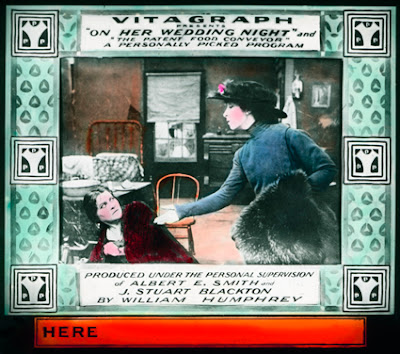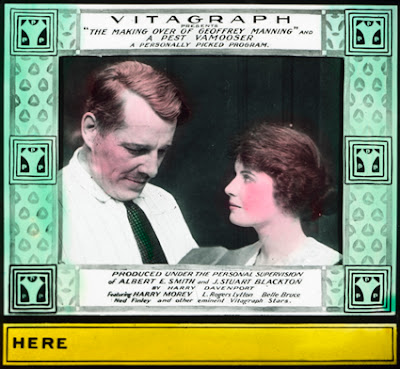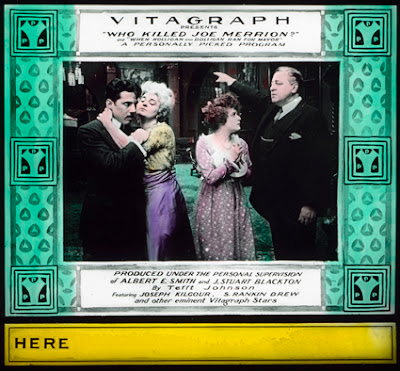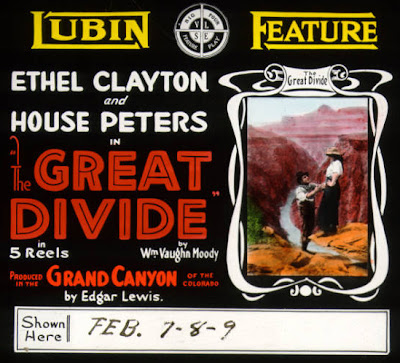Personally Picked Vitagraph Programs – Just For You
March 11, 2011
Without exception, studio-sponsored professionally produced coming attractions slides were used to advertise individual titles, never combined programs. Of course individual exhibitors often hand-made custom slides to promote upcoming programs (see DIY Coming Attractions), but program lineup slides never originated from the studios.
Or so I thought.
That was until I came across these three slides featuring Vitagraph program releases from late 1915 and early 1916. These professionally produced slides from the Manhattan Slide and Film Company advertise "Personally Picked Programs" of paired titles from Vitagraph's weekly output.
As it happens, these three slides represent Vitagraph programs for three consecutive weeks. Each program pairs a drama with a comedic short, and in each case it is the featured drama that dominates the advertising. The hand colored still photograph depicts a scene from the drama, and names only the actors and producers from the featured title.
The first of the three "Personally Picked Programs" is from December 20, 1915 the date on which Vitagraph released the dramatic mystery On Her Wedding Night as well as the comedy short The Patent Food Conveyer.

One week later on December 27, 1915, Vitagraph's weekly program consisted of The Making over of Geoffrey Manning paired with the short comedy short A Pest Vamooser.
It should be noted that Vitagraph released two other titles on this date as well, the comedy What Happened to Father and the short He Got Himself a Wife. In fact none of the titles in these "Personally Picked Programs" represent the only Vitagraph releases for the week.
Why were these particular titles were paired as a Picked Program? The answer is unclear to me, though it must have been part of Vitagraph's overall marketing strategy since these programs appear to have a unique branding logo - the square pattern that is repeated six times on each slide. Looking closely you can see that it is a large stylized "V" flanked on three sides with a letter "P" which I can only assume represents Vitagraph Personally Picked Programs.

The weekly program released to the public on January 3, 1916 featured the drama Who Killed Joe Merrion? paired with the comedy short When Holligan and Dolligan Ran for Mayor. (This slide may contain a typographic error, since most sources list the names in the title as Hooligan and Dooligan.) The comedy short also features Flora Finch, a name more familiar than most to modern audiences (though you won't find her name on the slide itself).

In addition to their uniqueness for advertising programs instead of individual titles, an equally striking aspect of these slides are how archaic the art design appears. While 1915-16 can reasonably be considered the "early days" of motion picture advertising, it's hard to imagine that these slides didn't seem stuffy and old fashioned to audiences of the time.
The Vitagraph design almost begs to be interpreted as a Victorian metaphor: Individuals boxed within rigid right angles, painted interior settings, and actors melodramatically gesturing within the confines of their overly ornate frame. Even if the films were not relics, these slides must surely have given the impression they were.
By way of comparison, consider the slide Lubin's feature The Great Divide which was released December 20, 1915, the same date as On Her Wedding Night (the first of the Vitagraph slides pictured above). Obviously not all 1915-16 film advertising was as boring as the Vitagraph slides would lead you to believe.

